Jack be nimble
How to avoid injuries from routine movements around your airplane

The similarities don’t end there. It may not feel that way, but after a prolonged time of physical inactivity such as sitting in a fixed position, the body gets stiff. It will fight you if you try to pull or push an aircraft, crawl into or out of a cramped cockpit, or place chocks after a long flight. Add to that, most people pull, push, and bend the wrong way, anyway. And that’s a perfect recipe for a pulled muscle or a more severe injury.
So, what’s a pilot to do to keep fit to perform routine movements around the airplane? Exercise. Warm up. The exercises in this article are done with body weight only. In cases where equipment is needed, just look around your hangar.
We have your back
Pull
You’re pulling your aircraft out of the hangar or from its tie down and, ouch, you made one wrong move, hurt your back, and at best are in pain for a couple of days, at worst can give up on that trip because you’re no longer able to get into the pilot’s seat.
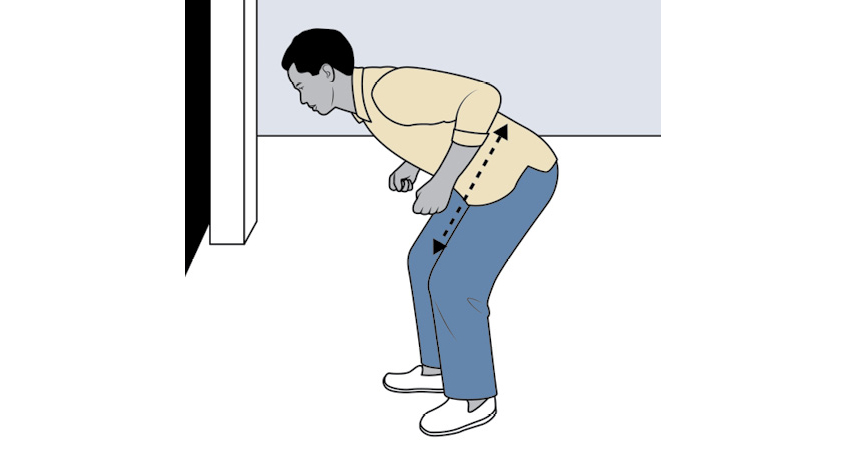 Warm up: Pull-overs, bend-over rows, and inchworms work the muscles in the back. All can be performed in your hangar or outside.
Warm up: Pull-overs, bend-over rows, and inchworms work the muscles in the back. All can be performed in your hangar or outside.
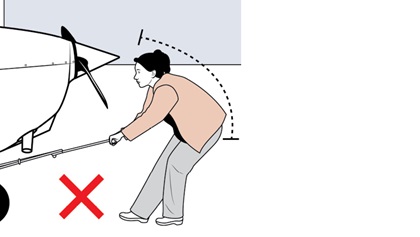
Wrong:See the outward bend in the spine? A sure sign the pilot is pulling with his back, which makes the move unnecessarily difficult and potentially painful.
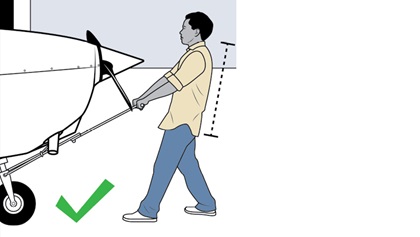
Right: The pilot’s body is a straight line from head to heels and he’s pulling the airplane with his body weight, gaining momentum. Least effort, no injury.
Push
Most pilots overextend themselves when they push an airplane, meaning their whole body parallels the ground. That way, they’re pushing with the lower back and their hips, instead of standing a bit closer und using their legs, shoulders, and chest. Pushing is actually a full body workout, as it involves the core of the body, the kind of strength everyone should develop.
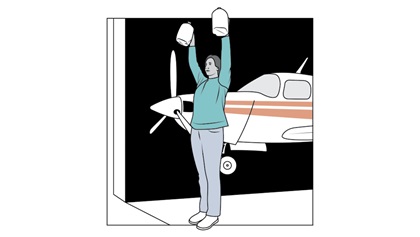
Warm-up: Push-ups to work your chest, overhead presses (use whatever weight equipment you have in your hangar, for example water jugs or chocks) for your shoulders, lunges and/or air squats for your legs.
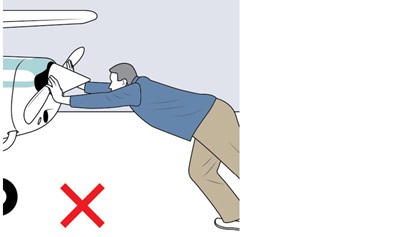
Wrong: If it looks like you’re doing a breaststroke out of water, it’s wrong
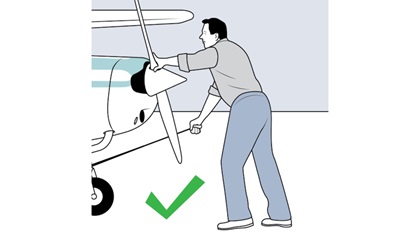
Right: Let your body weight do the work. Maybe not effortless, but a lot easier.
Take a bow. (Not.)
Crouch
Being around airplanes a lot, you probably don’t notice it, but there’s a lot of crouching involved. Tie-downs. Placing chocks. Checking for leaks. Cleaning. Fuel sumping.
The reason why pilots don’t realize the amount of crouching is because they’re not crouching but bending. Humans like to do things with the least amount of effort and bending feels a lot easier than getting a little closer to the ground. But like so many movements, what seems to be the easy way out might actually hurt your back.
How do you crouch? Bend your knees, keep your weight on your feet. If you can’t wiggle your toes, you’re not doing it right.
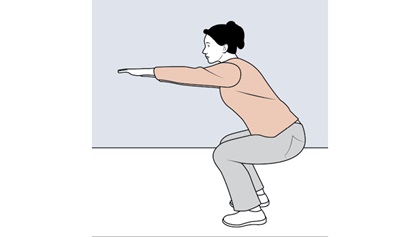
Warm-up: Squats, sit-ups, leg raises, flutter kicks to warm up glutes and hamstrings.
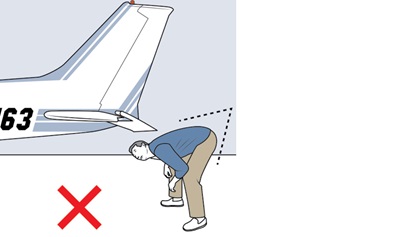
Wrong: If your head is lower than your behind, you’re bending.
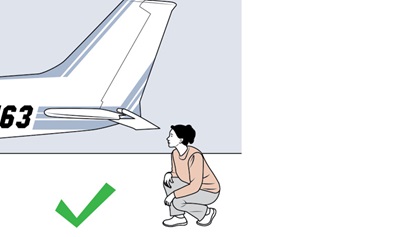
Right: Bend the knees, bring your behind down, and your head up.
The exercises shown here have been developed by Jake Keister, who, when he’s not working as AOPA’s digital marketing specialist, is also a personal trainer at a local gym.


